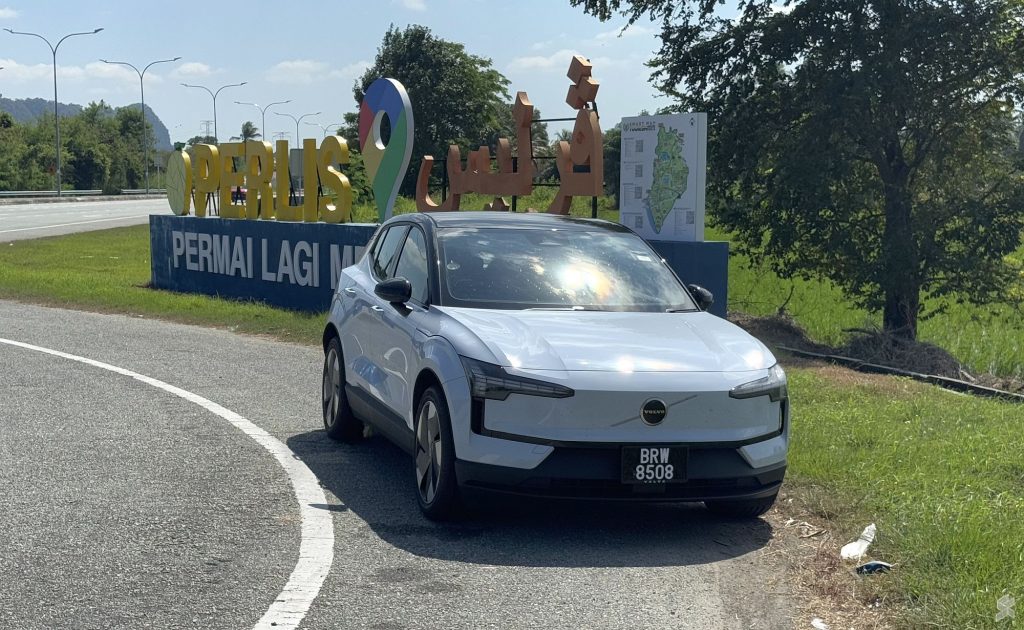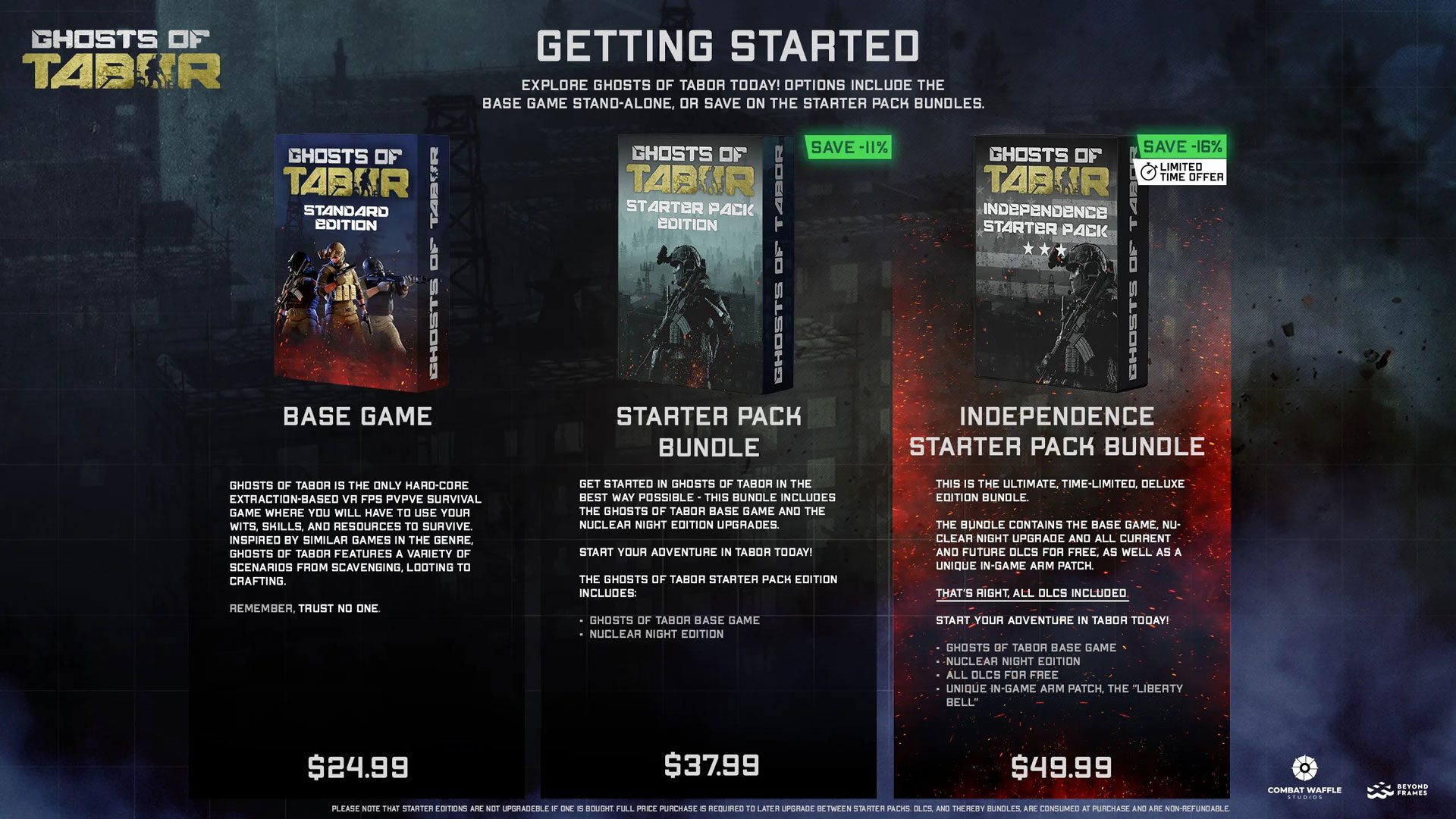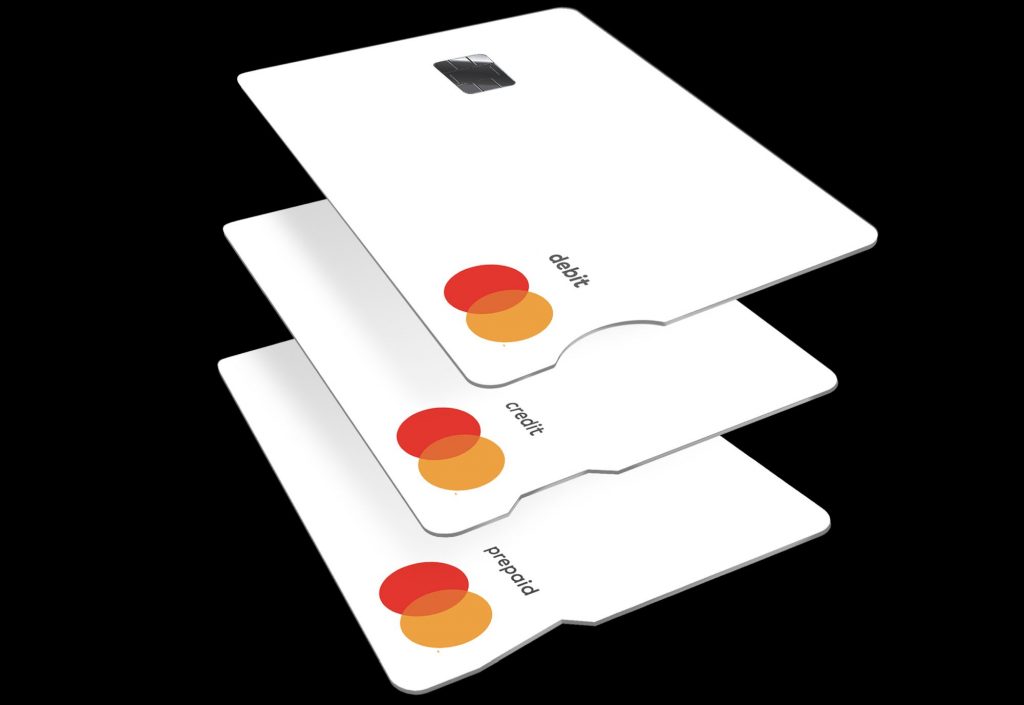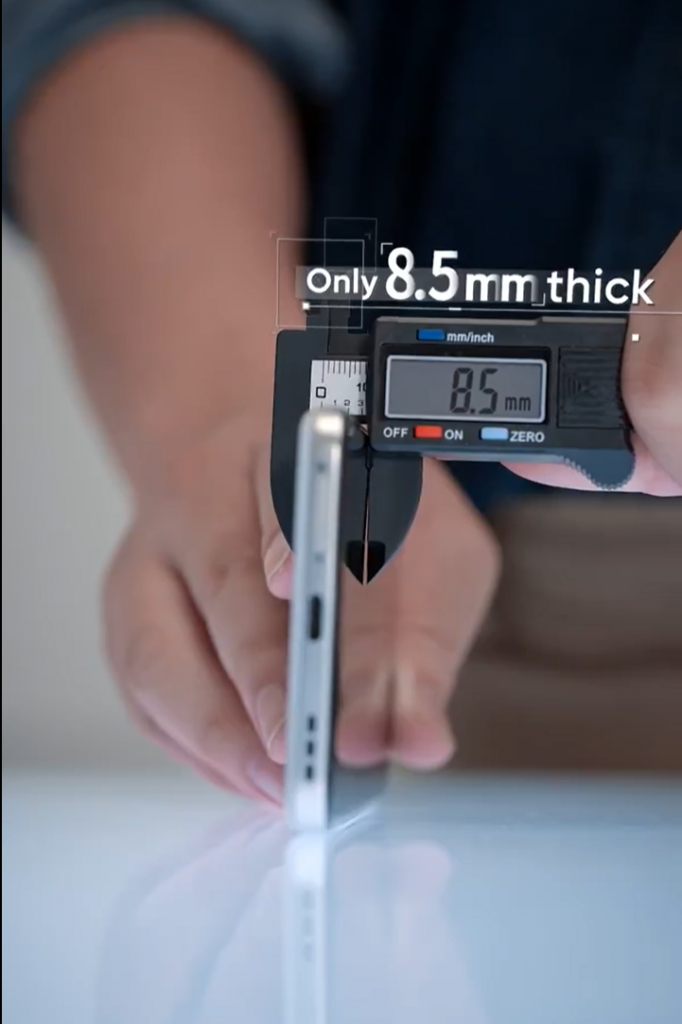Recently, we’ve been given the keys to a Volvo EX30 during the Christmas holiday week. The variant which we got is the base EX30 Plus model which comes with a single motor and a decently sized 69kWh battery.
To find out if this RM188,888 fully electric SUV is any good for long distance trips, we have taken it for an EV road trip to Perlis, the northernmost state of Peninsular Malaysia. This EV has a modest WLTP-rated range of up to 476km on a single charge and this is also a good opportunity to try out the current EV charging infrastructure around the Northern region.
Recap of Volvo EX30 in Malaysia
The Volvo EX30 is the smallest EV Volvo has ever made and it’s also the most affordable Volvo you can buy at the moment, priced from under RM200,000. For the Malaysian market, there are three variants and all of them are equipped with the larger 69kWh NMC battery and 19″ wheels as standard.
The base EX30 Plus (RM188,888) and mid-level EX30 Ultra (RM208,888) are rear-wheel-drive (RWD) EVs with a single motor pushing 200kW (268hp) and 343Nm of torque. Both can do 0-100km/h in 5.3 seconds and the top speed is capped at 180km/h. For the Plus version, it lacks powered front seats, Park Pilot Assist, panoramic glass roof and a 360-degree camera. If you want these 4 options, you’ll have to add another RM20,000 for the EX30 Ultra.
If you want more performance, you can top up another RM20,000 for the EX30 Ultra Twin Performance (RM228,888) which adds an additional front motor and it provides a combined output of 315kW (422hp) and 543Nm of torque. With a 0-100km/h time of 3.6 seconds, this is the fastest accelerating production Volvo yet but it still has the same top-speed of 180km/h.
The twin-motor EX30 has slightly less range with up to 450km, instead of 476km on the single motor variants. If every km of range is important to you, the RWD EX30 variants are better suited for long distance trips.
The Volvo EX30 supports DC charging of up to 175kW and three-phase AC charging of up to 11kW. On paper, 10-80% charge takes about 28 minutes, provided that you can find a 180kW DC Charger.
Kuala Lumpur to Perlis
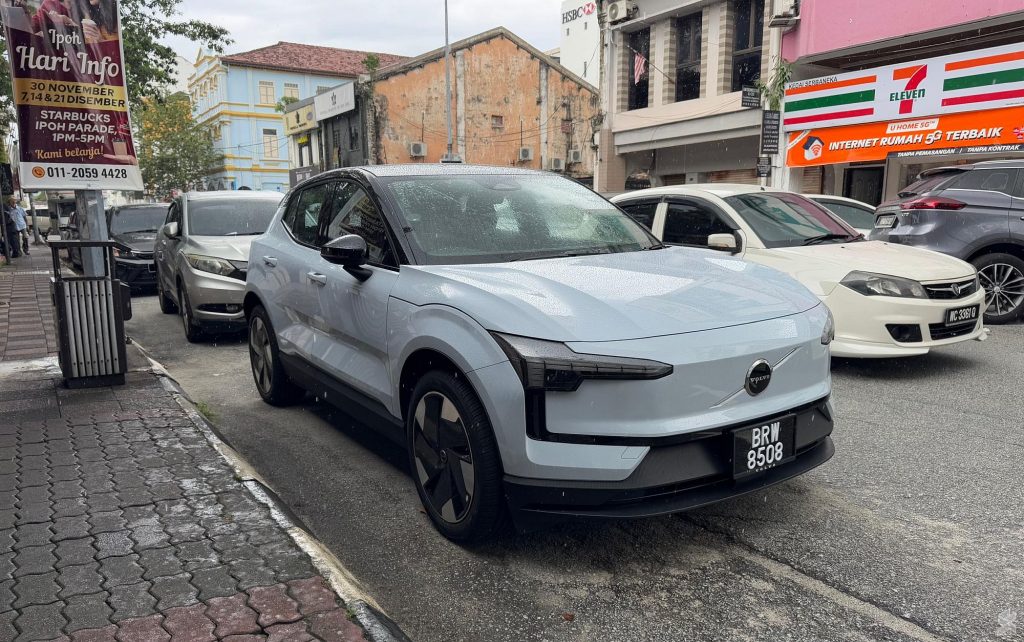
We departed from Kuala Lumpur on a Saturday at 9:45am with 100% charge. It was already super congested even before we entered the North South Expressway and that’s to be expected during the holiday season.
About 3 hours and 30 minutes later, we arrived in Ipoh around 1pm for lunch with 57% battery remaining. The EX30 has been pretty efficient as it recorded 15.2kWh per 100km after travelling a distance of 199km.
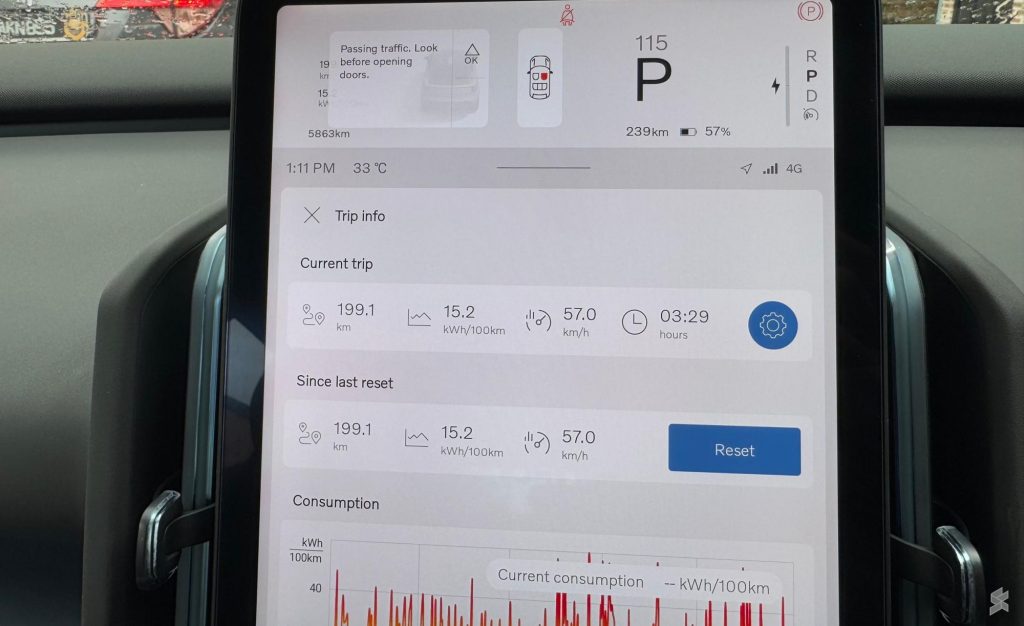
After a short walkabout, we left Ipoh at 2:30pm and arrived at Petronas Juru R&R Northbound around 5:30pm for our first ever DC charging stop.
At this point, the EX30 had clocked 336.7km with an efficiency of 14.5kWh per 100km which is pretty good. With the Gentari 180kW DC Charger we did 29-80% charge (35.3kWh) in 23 minutes while having a toilet and coffee break. This charging session costed us RM26.61.
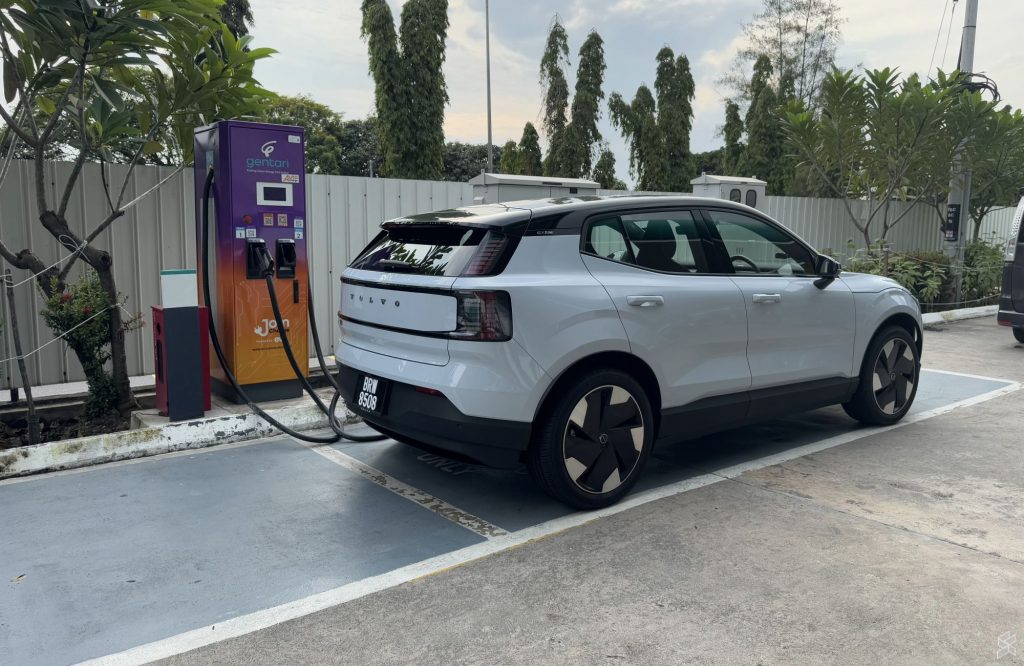
Next, we head to Alor Setar for dinner and we arrived at around 8.15pm with 58% battery remaining.
We need to pick up some items from Lotus’s Mergong and it was also a good opportunity to do another quick top up. With an EV, it is recommended to top up whenever possible and it is even better if you could charge at a destination.
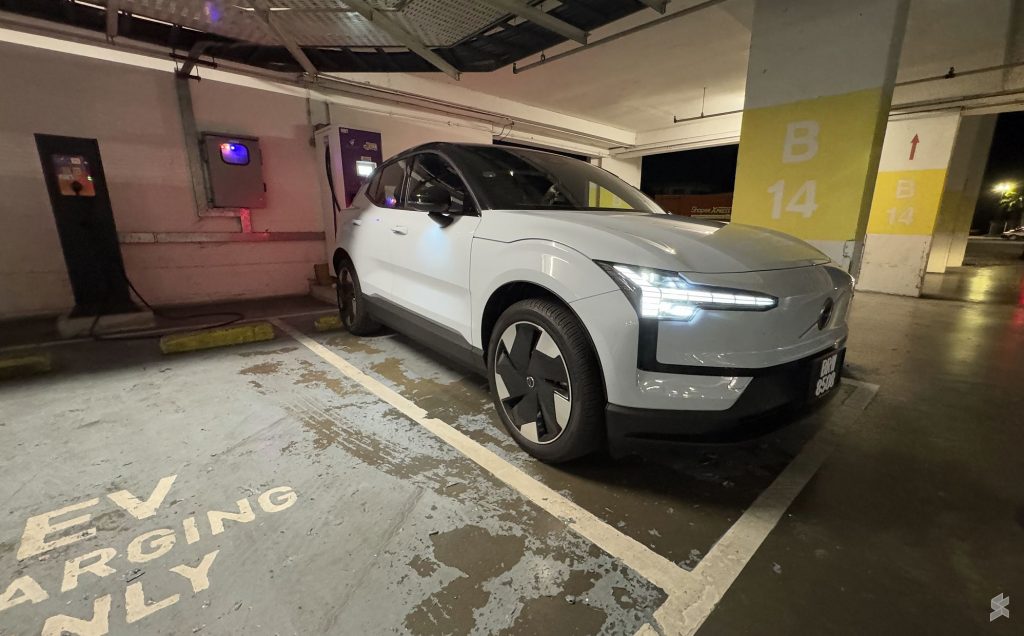
For this location, Gentari has deployed 50kW DC Charger and we got 55%-73% charge (12.7kWh) in 15 minutes. This quick top up at Lotus’s costed us RM9.51.
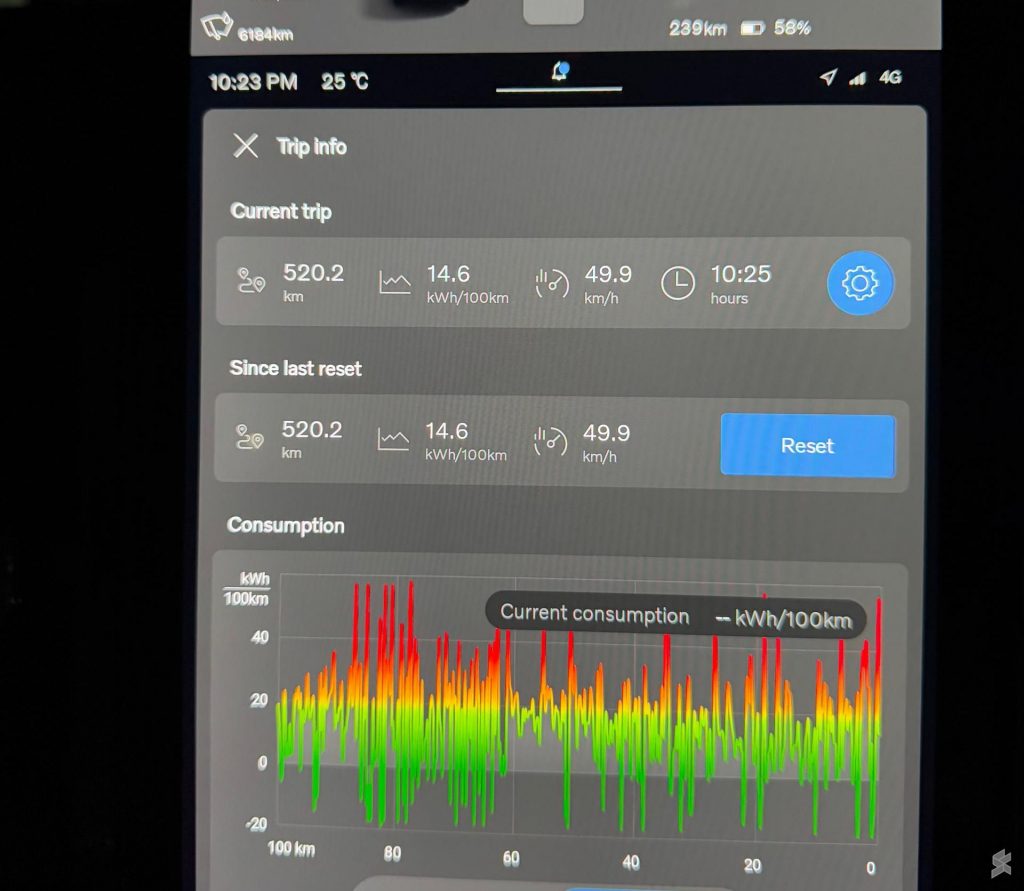
After getting what we needed, we left Alor Setar and arrived at our hotel in Padang Besar, Perlis around 10:20pm.
In total for the first day, we travelled 520.2km with over 10 hours of driving and we did an efficiency of 14.6kWh per 100km.
Perlis to Penang
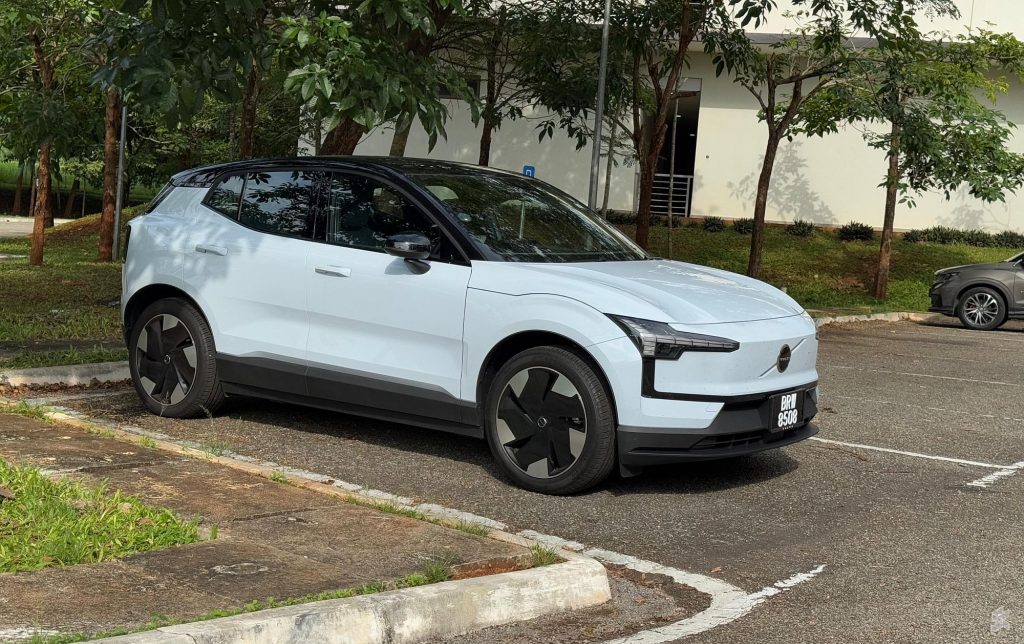
After checking out from the hotel, we kicked off Day 2 by heading to Kuala Perlis. After having Laksa Perlis with pulut panggang for breakfast, we went to check out the only DC charger in the entire state of Perlis.
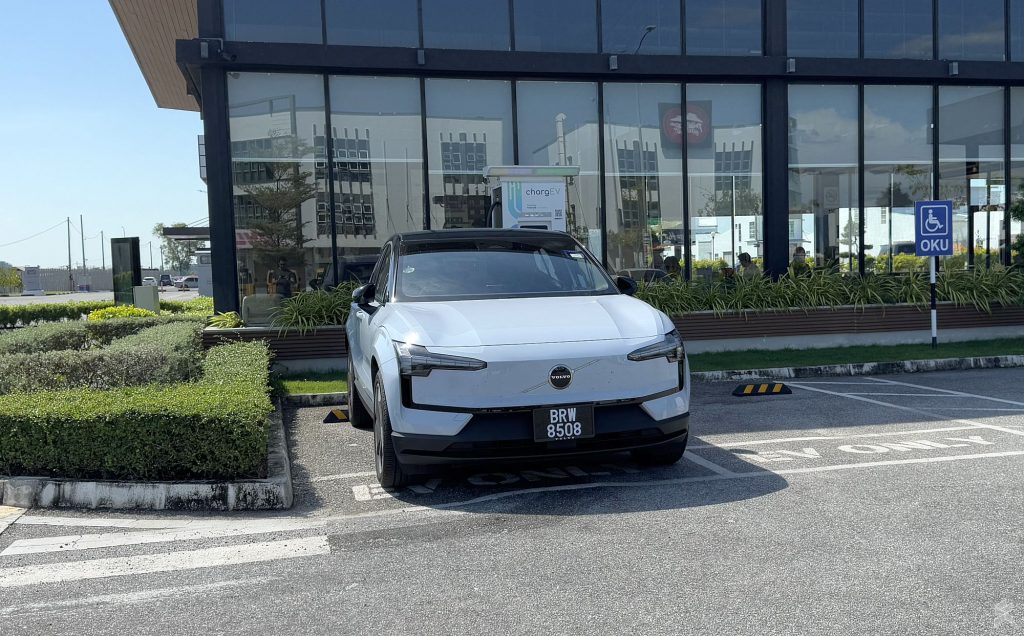
Deployed a year ago, ChargEV’s 60kW DC Charger at Starbucks Kangar Jaya drive thru is the only public DC charger in Perlis. We plugged in while getting some coffee and the 17-minute charging session to get from 45-67% (15.6kWh) costed us RM18.79.
We then proceed with our journey to Bukit Mertajam for lunch before arriving at our hotel in Georgetown with 21% battery. At this point, we’ve covered a distance of 242km on the second day with an efficiency of 15.4kWh per 100km.
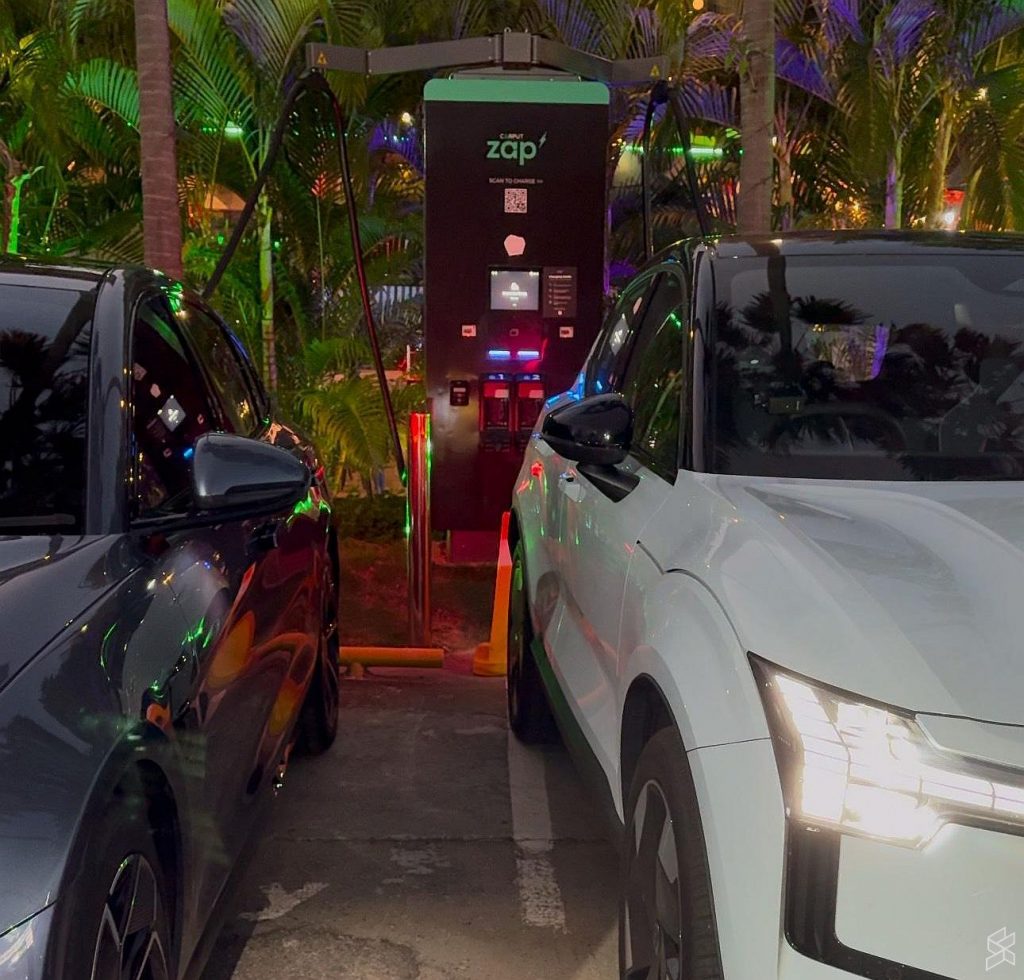
Before heading out for dinner, we did a quick top up at Carput Zap’s 120kW DC Charger at New World Park located next to the hotel.
With another EV plugged in beside us, we charged from 21% to 53% (22.6kWh) in 23 minutes for RM27.17.
Penang to Kuala Lumpur
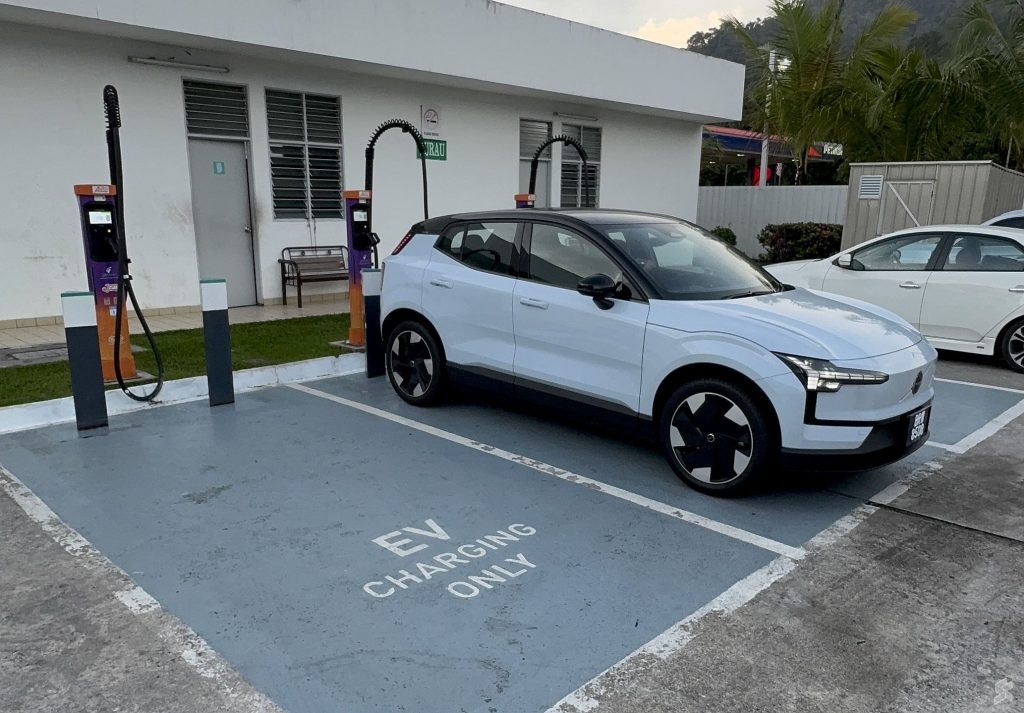
On Day 3, we left Penang early as we aim to reach KL before noon. We departed from our hotel in Georgetown with 49% battery remaining at 6:30am and arrived at Gunung Semanggol R&R Southbound about an hour later.
While having breakfast, we plugged the EX30 to Gentari’s 150kW DC Charger and there was nobody else around. Once we’re done with breakfast, the 29-minute session had charged the EX30 from 26-84% (39kWh) and it costed us RM29.22.
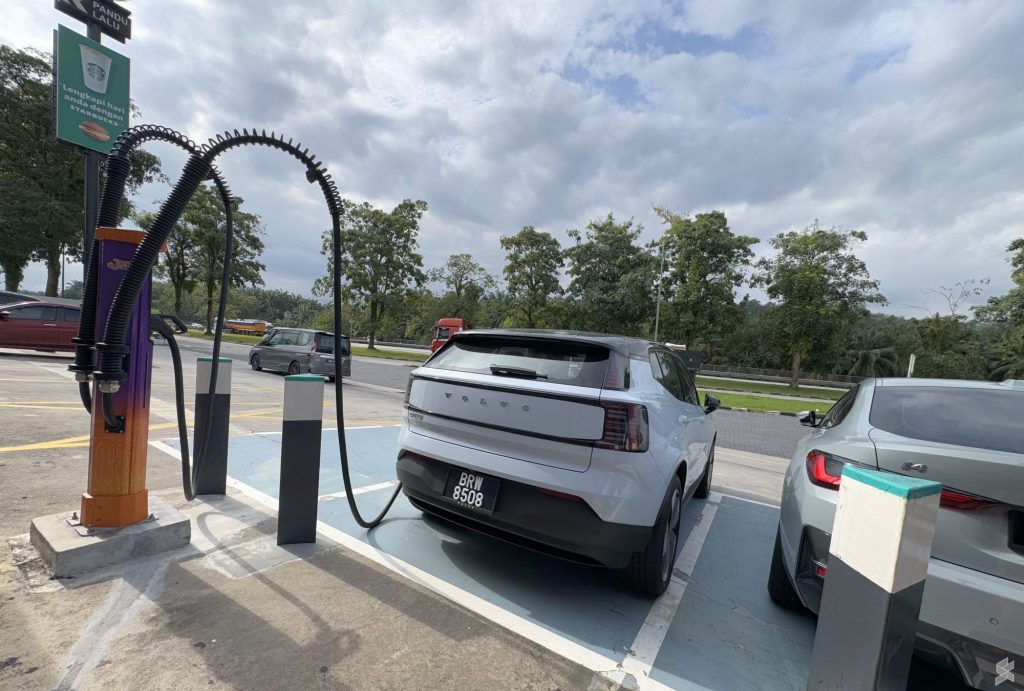
Unlike the initial journey northbound, there was no traffic on the way down to KL and that means more opportunity for spirited driving.
Almost two hours later, we stopped at Ulu Bernam R&R Southbound for a toilet break and a quick EV charging top up at another Gentari 150kW DC charger. This time, there was another EV plugged in and the remaining two bays were empty.
For this stop, we only charged for 13 minutes which topped up the EX30’s battery from 21% to 45% (15.7kWh). This charging session costed us just RM11.78.
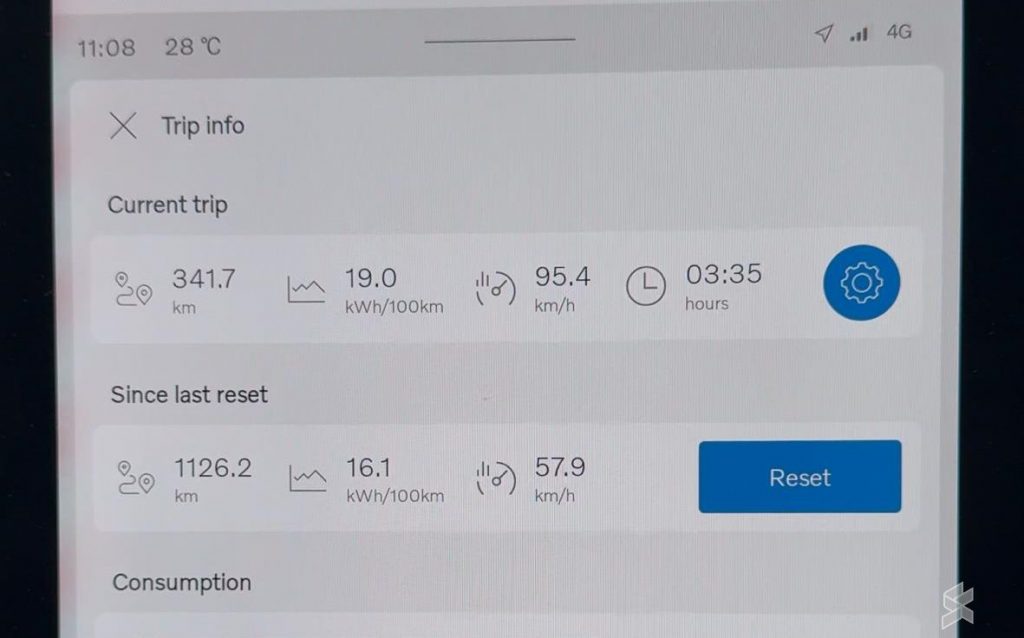
We arrived in Kuala Lumpur at 11am with 27% battery remaining. The journey from Penang to Kuala Lumpur covered a distance of 341.7km and we did an efficiency of 19kWh per 100km.
For the entire trip from KL to Perlis and back, we travelled a distance of 1126km with a total efficiency of 16.1kWh per 100km. Overall, the EX30 is a fairly efficient EV and the modest WLTP-rated range of 476km provided enough range confidence to travel to the top end of Peninsular Malaysia.
Based on our real world efficiency figures, this fun and nimble EV is definitely capable of doing Kuala Lumpur to Penang or Kuala Lumpur to Johor Bahru on a single charge.
Total cost of charging the EX30 for Kuala Lumpur to Perlis to Kuala Lumpur
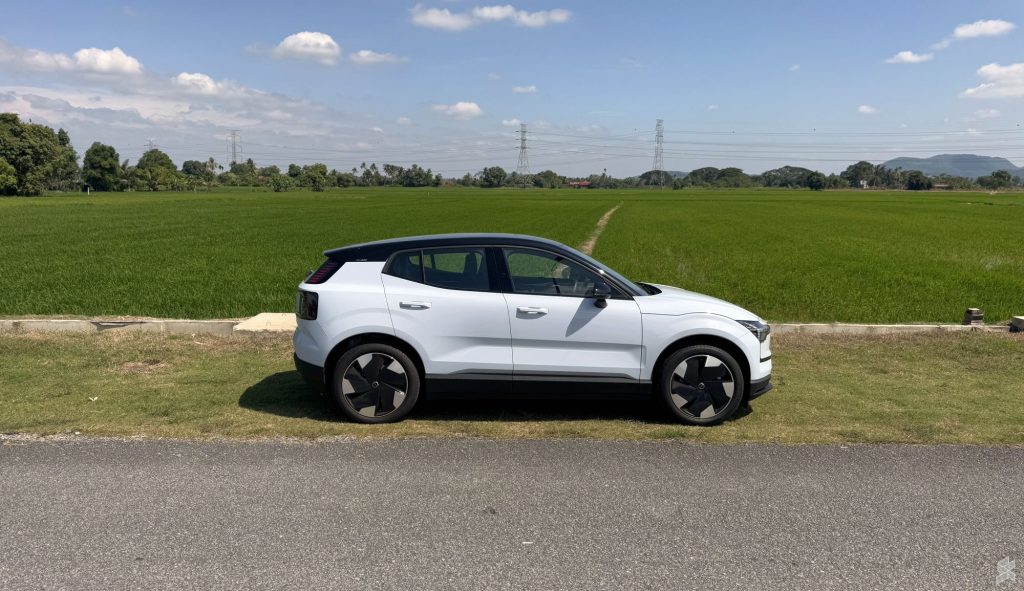
Here’s the breakdown of all EV charging sessions for the entire trip to Perlis and back:
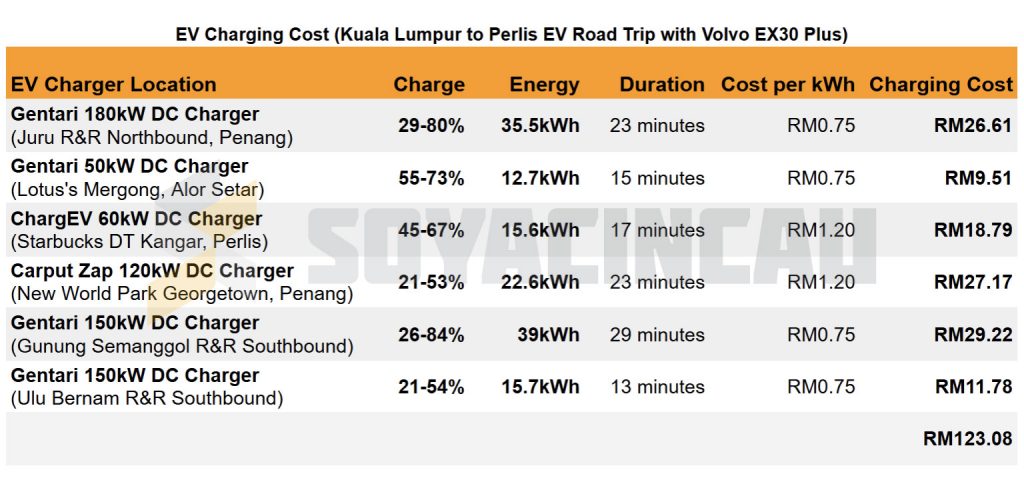
In total we spent RM123.08 on charging for the entire 1,126km trip. One factor that brought the EV charging cost down is Gentari Go’s RM899 Annual Power Pass subscription which provided 50% off on all EV charging sessions on their network. Gentari’s DC chargers are normally priced at RM1.50 per kWh and the pass gave us a discounted rate of RM0.75 per kWh.
Throughout the trip, we charged whenever it is convenient, such as while taking a toilet stop, breakfast or while doing some errands at a store. For short breaks, we only charged for about 15 minutes which provided more than enough range to reach out next stop. When it comes to DC fast charging, you don’t need to charge to full as the final 20% (80-100%) will take a significantly longer time due to the charging curve.
Despite the holiday season, it is worth pointing out that we didn’t had to queue for charging for the entire weekend trip as the chargers were mostly empty. The only time we “shared” a DC charger was at New World Park and at Ulu Bernam R&R Southbound.
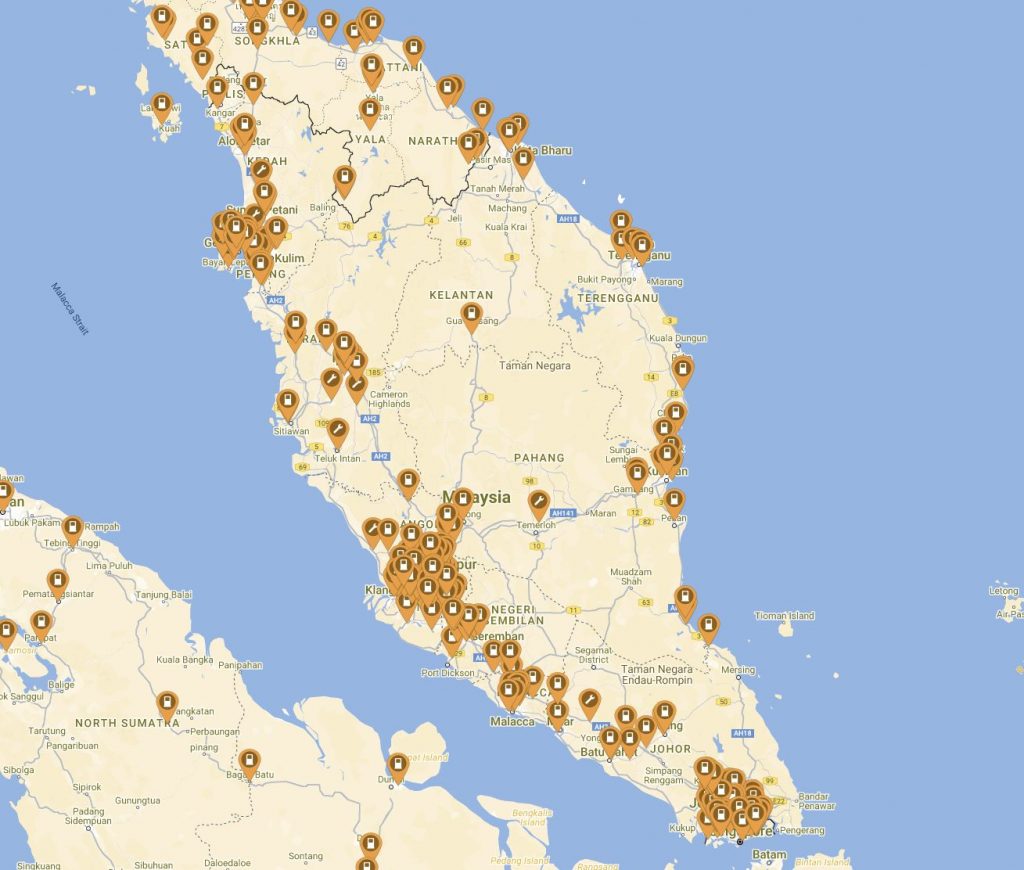
Compared to two years ago, the EV charging infrastructure along the North South Expressway has expanded tremendously with over 20 R&R and Lay-bys equipped with DC charging points. Most of the legacy slow AC charge points in R&Rs have been upgraded to faster DC chargers.
As we’ve seen and experienced from dozens of EV road trips throughout West Malaysia, most of these chargers along the highway are still underutilised. From the plans revealed by Charge Point Operators, more EV charging stations will continue to be deployed in tandem with the growth of EV adoption in Malaysia.
But what about the Volvo EX30 and how is it like to drive? Stay tuned for our review.

